Research
The Department of Astronomy and Planetary Science at NAU is home to active faculty research programs in several exciting areas in the lab, at the telescope, and participating in NASA Solar System Exploration missions.
Current research projects:
Astrobiology Accordion Closed
Relevant faculty:
 Mark MarkSalvatore |
 David DavidTrilling |
Active research:
Antarctic Studies
What controls the distribution and activity of life in the coldest and driest locations on Earth? Dr. Salvatore’s work is revolutionizing how we search for life on Earth and other planets. His research team conducts field work in the McMurdo Dry Valleys of Antarctica to study the activity of photosynthetic microbial communities and to compare these observations with orbital measurements. The goal is to be able to model the distribution, activity, health, and biochemical properties of these systems remotely to further understand the conditions required for life to thrive.
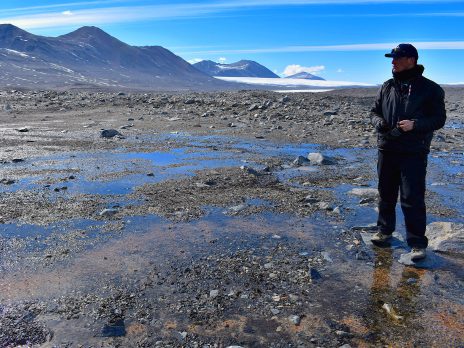
Experimental Astrobiology
Dr. Trilling is carrying out several projects in experimental astrobiology in collaboration with faculty in NAU’s Biological Sciences department. In the first, he is measuring to what degree microbial life can survive in increasingly Mars-like conditions through a series of experiments with sealed containers using both local soil from Northern Arizona and Mars analog soils. In the second, his team is carrying out physiology experiments on laboratory mice to determine the short-term and long-term effects of exposure to lunar and asteroidal dust. They are using reverse-transcriptase quantitative PCR and histology and studying airway microbiome composition to identify and quantify pulmonary epithelial inflammation, tissue remodeling, and pulmonary function pathology resulting from exposure to dust simulants. Finally, in the third, Trilling and colleagues are studying remediation techniques for perchlorates, which are present on Mars at lethal concentrations that would prevent food production (farming) there.

Astroinformatics Accordion Closed
Relevant faculty:
 David Trilling David Trilling |
Astroinformatics is the application of “big data” techniques to problems in astronomy. Dr. Trilling leads the Solar System Notification Alert Processing System (SNAPS) broker, which ingests data from all-sky telescopic surveys. We derive the physical properties for hundreds of thousands of asteroids, and use various computational and data science approaches to identify unusual asteroids. The science goal is to use these derived global properties of asteroids, together with the incidence rates of unusual asteroids, to help constrain how our Solar System formed and evolved. In the next few years our project will undergo a tenfold increase in scale with the LSST survey begins.
Exoplanets & Planetary Formation Accordion Closed
Relevant faculty:
 David Trilling David Trilling |
 Diego Munoz Diego Munoz |
Active research:
Formation & Evolution of Planetary Systems
Dr. Trilling is using the Hubble Space Telescope to discover very faint Kuiper Belt Objects. The orbits and physical properties of these distant objects will help constrain the origin of the Solar System.
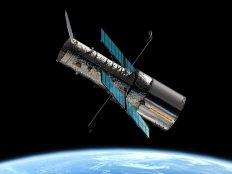
Dr. Munoz works on diverse topics of theoretical astrophysics, using super-computing simulations and pencil-and-paper calculations. His research interests include protoplanetary disk dynamics and evolution, exoplanets, astrophysical fluid dynamics, stellar and planetary tidal interactions, theoretical orbital dynamics, super-massive black hole binaries, and exoplanets. His work also includes the development of numerical methods for compressible gas dynamics and their implementation on massively parallel astrophysical software.
Laboratory Studies of Planetary Materials Accordion Closed
Relevant faculty:
 Christopher Edwards Christopher Edwards |
 Josh Emery Josh Emery |
 Mark Loeffler Mark Loeffler |
 Mark Salvatore Mark Salvatore |
 Stephen Tegler Stephen Tegler |
Active research:
Asteroidal Analogs
Dr. Emery measures laboratory spectra of analogs to materials found on asteroid surfaces in order to facilitate interpretation of telescopic observations. The materials include terrestrial minerals as well as meteorites. Investigations generally include petrologic and mineralogic characterization of the samples to ground the spectral data. We typically attempt to simulate different environmental conditions on asteroid surfaces to investigate the effects on measured spectra.
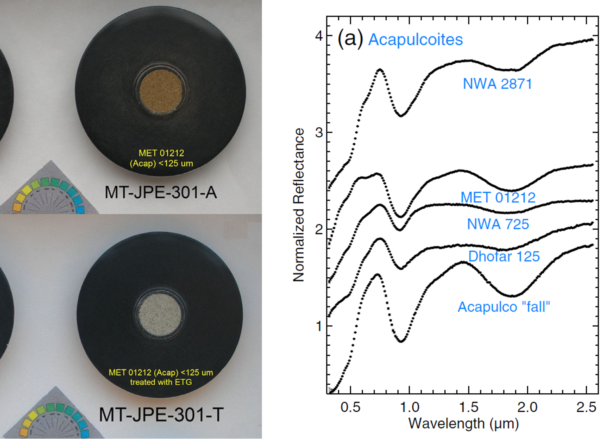
Evolution of Planetary Surfaces
Dr. Loeffler runs the Processes, Environments, and Astrochemistry on Extraterrestrial Surfaces (PEAXS) Laboratory at NAU, which studies the physical, chemical, and structural evolution of planetary surfaces.
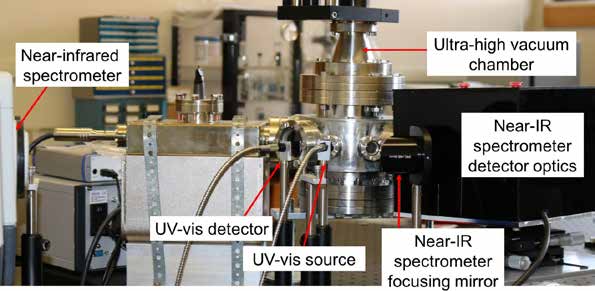
Instrument Development
Dr. Edwards designs and builds prototype instruments for use in the laboratory, the field, and ultimately space. Specifically, he works with novel thermal infrared techniques designed to maximize scientific output while minimizing size, weight, and power.
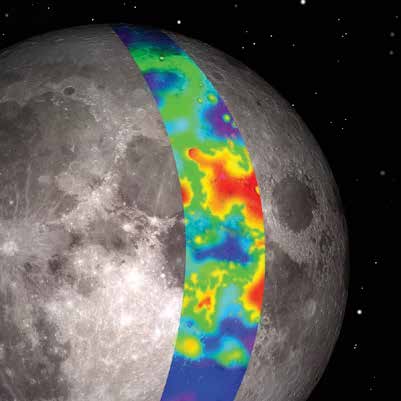
Planetary Ices
Dr. Tegler studies ices relevant to the surfaces of Kuiper Belt Objects in the Astrophysical Ice Laboratory using transmission and Raman spectroscopy.
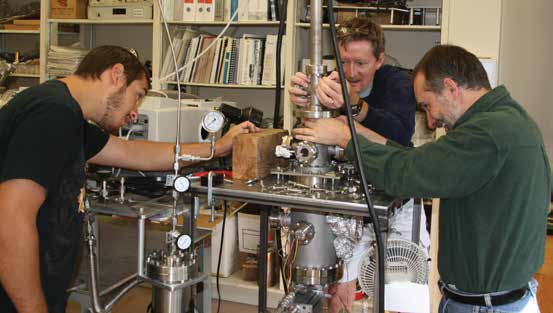
Terrestrial Studies
Dr. Salvatore and Dr. Edwards collaborate in the laboratory analysis of terrestrial samples for comparison to remotely acquired signatures on planetary surfaces.
Observational Planetary Science Accordion Closed
Relevant faculty:
 Josh Emery Josh Emery |
 Stephen Tegler Stephen Tegler |
 Cristina Thomas Cristina Thomas |
 David Trilling David Trilling |
 Chad Trujillo Chad Trujillo |
Active research:
Characterization of Kuiper Belt Objects
Drs. Emery, Tegler, Trilling, and Trujillo are all involved with the identification and characterization of Kuiper Belt Objects using a multitude of instruments and techniques. For example, Dr. Trujillo is actively searching the outer reaches of our Solar System to find extremely distant Trans-Neptunian minor planets and dwarf planets — the unusual orbits of these objects suggest that there may be an undiscovered giant planet lurking in our outer Solar System. Dr. Emery led a large survey of Centaurs and KBOs with the Spitzer space telescope to investigate ices and organics on their surfaces, and he looks forward to continuing those investigations with the James Webb Space Telescope.

Image credit: Scott S. Shappard/Carnegie Institution for Science.
Composition of Asteroids
Dr. Thomas uses visible and near-infrared spectroscopy to characterize the composition of asteroids. She recently completed a ground-based spectral survey of the Massalia, Merxia, and Agnia families of asteroids using the NASA Infrared Telescope Facility (IRTF) and SOAR telescopes.

Dr. Emery investigates compositions of Main Belt and Trojan asteroids with reflectance spectroscopy at visible and near-infrared wavelengths and emission spectroscopy at mid-infrared wavelengths using ground- and space-based telescopes. He has particularly focused on the 2–4 μm region to study asteroidal volatiles and organics.

Icy Moons / Ocean Worlds
Dr. Emery studies the surface compositions of the moons of the giant planets to understand the compositions of ices and structures of the near surface layer.
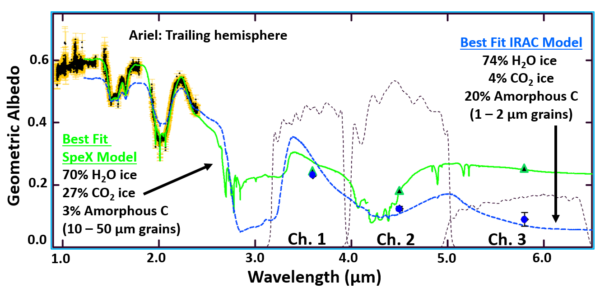
Investigation of Near-Earth Asteroids
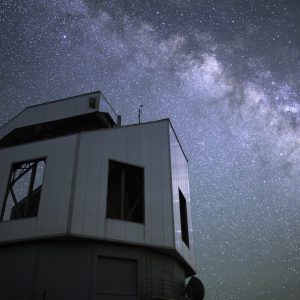
Dr. Trilling uses telescopes all over the world and in space to study the physical properties of Near-Earth Asteroids. He leads two projects to develop and enhance instrumentation to support this research. Dr. Thomas is a co-investigator on the Mission Accessible Near-Earth Object Survey (MANOS), which observes small, newly discovered NEOs. She also led the investigation of the observability of NEOs with the upcoming James Webb Space Telescope (JWST). Dr. Emery uses the same techniques to study silicate mineralogy and volatile compositions of near-Earth asteroids as described above for Main Belt and Trojan asteroids.
Thermophysical Characterization of Planetary Surfaces
Dr. Emery observes small bodies across the Solar System in the thermal infrared (i.e., the heat emitted by the surfaces). These observations enable determination of sizes and albedos (a technique called radiometry). Detailed thermal observations also enable thermophysical characterization of the surfaces, which, in turn, provide a window into the physical structure of the surface (e.g., is it covered in fine regolith like the Moon, or more bouldery, such as the NEAs Bennu and Itokawa).
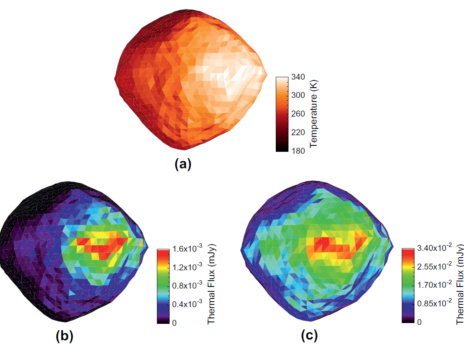
Planetary and Solar System Dynamics Accordion Closed
At the Astronomy and Planetary Science Department, researchers are extending our understanding of orbital dynamics in the Solar System and beyond, seeking to decipher the past and understand the future or planetary systems. We dissect the implications of Newton’s Universal Law of Gravitation to comprehend their impact on the solar system’s structure and history, and to further out understand ing of the complex nature of orbital dynamics in general. Our research spans a broad range of subjects, including exoplanets, active asteroids, and Kuiper Belt objects, providing insights into their unique roles and behaviors.
Relevant faculty:
 Diego Munoz Diego Munoz |
Active research:
Dr. Munoz works on diverse topics of theoretical astrophysics, using super-computing simulations and pencil-and-paper calculations. His research interests include protoplanetary disk dynamics and evolution, exoplanets, astrophysical fluid dynamics, stellar and planetary tidal interactions, theoretical orbital dynamics, super-massive black hole binaries, and exoplanets. His work also includes the development of numerical methods for compressible gas dynamics and their implementation on massively parallel astrophysical software.
Planetary Surface Processes Accordion Closed
Relevant faculty:
 Christopher Edwards Christopher Edwards |
 Mark Salvatore Mark Salvatore |
Active research:
Mars Surface Investigations
Both Dr. Edwards and Dr. Salvatore are Participating Scientists on the Mars Science Laboratory Curiosity rover mission, where they are active in both surface investigations and rover operations. In addition, their work focuses on understanding martian surface composition and thermophysical properties using reflectance and emission spectroscopy.
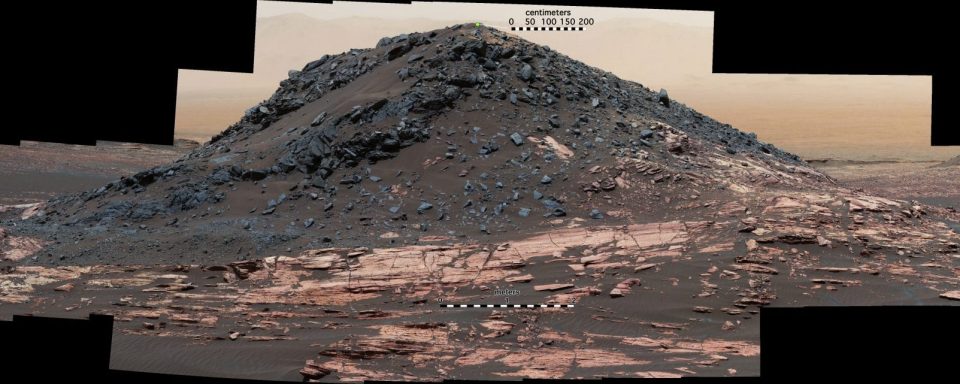
Image Credit: NASA/JPL/Caltech/MSSS
Planetary Analogs
Dr. Salvatore uses analog environments and landscapes on Earth to understand how the martian surface has evolved over geologic time. Specifically, his work in the Transantarctic Mountains has demonstrated how the martian surface has geochemically evolved even under cold and dry conditions.

Spacecraft Missions Accordion Closed
Relevant faculty:
 Josh Emery Josh Emery |
 Christopher Edwards Christopher Edwards |
 Cristina CristinaThomas |
 Mark MarkSalvatore |
DART
NASA’s DART (Double Asteroid Redirection Test) will impact the moon of the near-Earth binary asteroid Didymos. The mission is an important test of asteroid deflection through kinetic impact and is NASA’s first planetary defense mission. Dr. Thomas leads the DART observations working group. This group focuses on using ground-based telescopes to obtain more information about the Didymos binary system and the orbit of the moon in particular. This information is critical to the mission because the observations will be used to note the change in the orbit of the asteroid moon after the impact of DART. We need to have a very firm understanding of the pre-impact orbit to understand how much we’ve changed the orbit. The DART mission is being developed and led for NASA by the Johns Hopkins University Applied Physics Laboratory.

Lucy
Dr. Emery leads the surface composition working group on NASA’s Lucy mission to explore the Trojan asteroids. The nature and origin of the Trojan asteroids, which share Jupiter’s orbit around the sun, remain elusive. Lucy will provide the first close-up view of this large population of primitive objects.
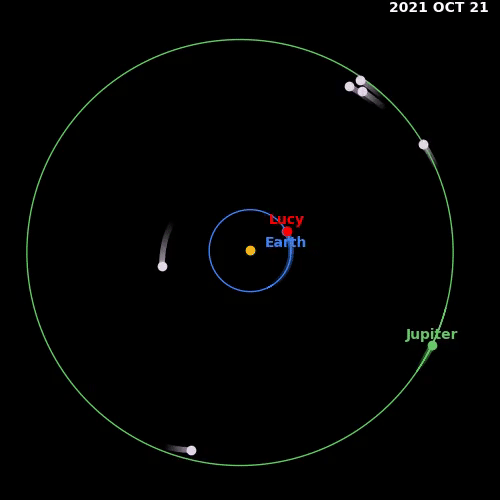
Mars Odyssey Thermal Emission Imaging System
Drs. Edwards and Salvatore use thermal infrared imaging data from the Mars Odyssey Thermal Emission Imaging System (THEMIS) to reveal the compositional and physical properties of the martian surface. These high resolution thermal infrared data reveal key information about Mars’ volcanic, weathering and alteration processes.
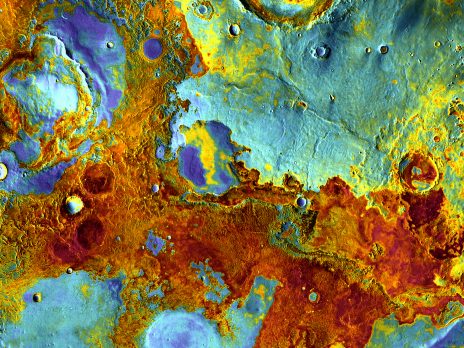
Mars Science Laboratory
Drs. Edwards and Salvatore use Mars Science Laboratory (Curiosity) rover data to help constrain past and present environments on Mars in unprecedented detail. In addition to helping plan the rover activities, scientific investigations include studies that link orbital data to ground truth, detailed geochemical and mineralogical comparisons as well as earth analog studies.
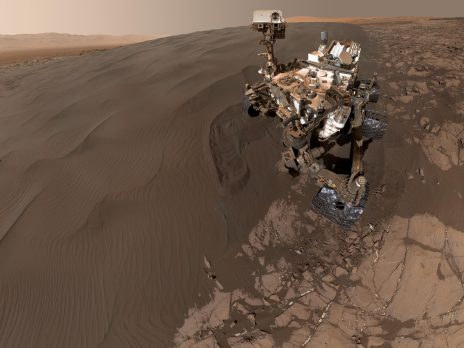
Near Earth Object Surveyor Mission
Dr. Emery is on the investigation team of the NEO Surveyor Mission, a planned thermal infrared space telescope designed to discover and characterize near-Earth objects.
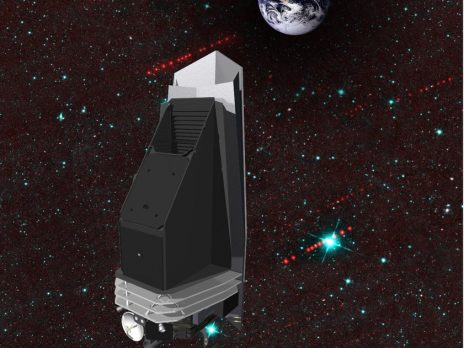
OSIRIS-REx
Drs. Emery, Thomas, and Edwards work on NASA’s OSIRIS-REx mission to return samples from the near-Earth asteroid Bennu. Characterizing the geology, geophysics, composition, and thermal properties of the surface with spacecraft data enables sample site selection, establishes context for laboratory analyses of returned samples, and provides the first detailed picture of the nature of small asteroids. Dr. Emery leads the thermal analysis working group, which is responsible for analysis of thermal data returned by the two spectrometers.
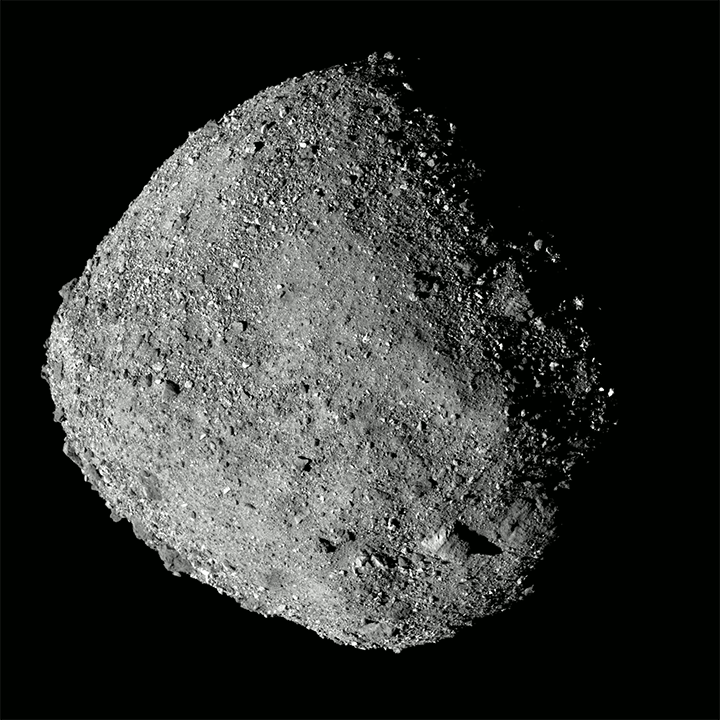
Theoretical and Computational Astrophysics Accordion Closed
Theoretical astrophysics involves formulating mathematical models and hypothesis to describe how physical processes operate in the cosmos. With the aid of the cutting-edge super-computing facility MONSOON, our work in theoretical and computational astrophysics allows us to develop and test physical theories, predict astronomical phenomena, interpret observations, simulate cosmic events and even guide future experimental design. At the Astronomy and Planetary Science Department at NAU, we implement the tools of theoretical astrophysics to model the origin and evolution of planetary systems, the interaction of planets and stars, the intricate orbits of multiple-body systems, and the gravitational coupling between super-massive black holes and their gaseous surroundings
Relevant faculty:
 Diego Munoz Diego Munoz |
Active research:
Dr. Munoz works on diverse topics of theoretical astrophysics, using super-computing simulations and pencil-and-paper calculations. His research interests include protoplanetary disk dynamics and evolution, exoplanets, astrophysical fluid dynamics, stellar and planetary tidal interactions, theoretical orbital dynamics, super-massive black hole binaries, and exoplanets. His work also includes the development of numerical methods for compressible gas dynamics and their implementation on massively parallel astrophysical software.